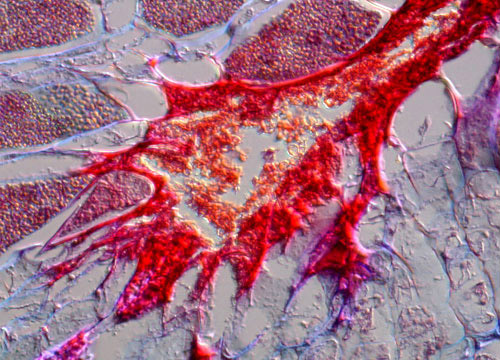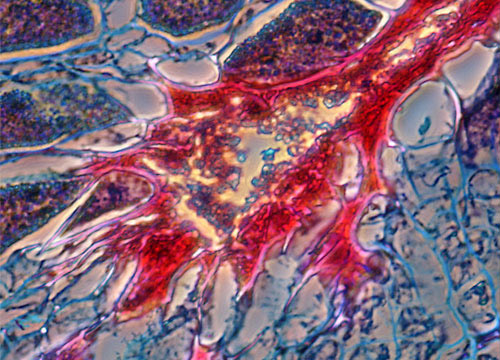Cabbage Clubroot Fungus
Clubroot is a disease caused by the fungus Plasmodiophora brassicae, which affects cabbages and other closely related crops. Early signs of clubroot include a yellowing of leaves and a tendency to wilt, but a characteristic swelling of the roots is the primary symptom of the condition.
 DIC
DIC
 Phase
Phase
Phase
Presence of the pathogen in soil and proper environmental conditions, such as low pH levels and humidity, initiate the proliferation of clubroot in new plants. The fungus generally enters the plant through the roots, where it initiates the rapid growth of cells and causes the roots to swell with excess tissue. The impaired root system cannot efficiently absorb water or nutrients, leading to a weakening of other parts of the plant. If a plant harboringPlasmodiophora brassicae carries out its full life cycle, the roots eventually decompose and ultimately release more of the fungus into the surrounding soil.
DIC
Farmers and gardeners can attempt to stem the disease, but infected plants cannot be saved. Since the fungus survives in soil and crop debris, any movement of dirt can result in instances of clubroot in new areas and should be avoided unless the material can be verified to be pathogen free. Fungicide treated soil, especially if it is alkaline, can help prevent clubroot, but often with limited success. The only sure method of avoiding the disease is to not grow susceptible plants in an infected area for at least ten years, which is the maximum amount of time that the fungus can survive in soil.













